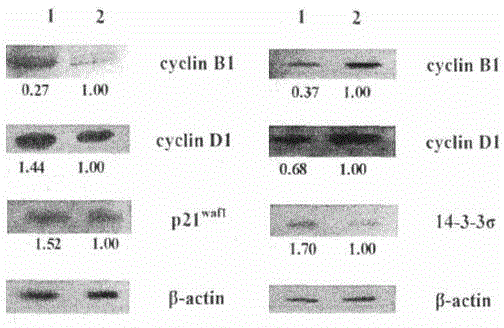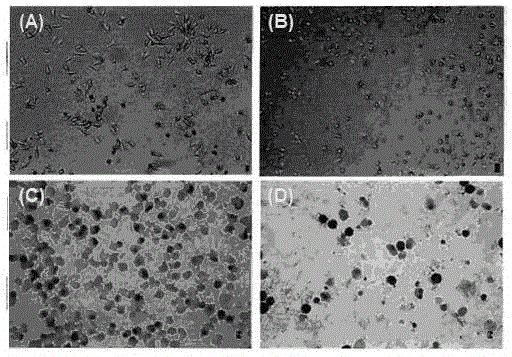Screening method of esophagus cancer markers by tea polyphenol in tea and golden camellia
A screening method, technology of tea polyphenols, applied in the field of screening tea polyphenols in tea and Camellia japonica for markers of esophageal cancer
- Summary
- Abstract
- Description
- Claims
- Application Information
AI Technical Summary
Problems solved by technology
Method used
Image
Examples
Embodiment 1
[0036] Extraction and separation of tea polyphenols from Meizhou Dancong tea: The XDA macroporous resin adsorption purification method is used to extract and prepare tea polyphenols from Meizhou Dancong tea. Soak in 30% ethanol for 20min→microwave extraction for 20min→separate the extract through a hollow fiber membrane (Mr=10000)→concentrate by rotary evaporation→pass through a macroporous resin XDA-200 column→elution with water→elution with 10% ethanol→30 Gradient elution with % ethanol → the eluent was concentrated by rotary evaporation → freeze-drying → dry powder was obtained. The content of tea polyphenols is determined according to the method of "GB / T 8313-2008 Determination of the content of tea polyphenols and catechins in tea leaves", and the content of tea polyphenols = (mass of tea polyphenols in sample powder / mass of sample) × 100%, the tea polyphenol separation and purification method described in the present invention, the tea polyphenol content is above 85%.
...
Embodiment 2
[0048] Extraction and separation of tea polyphenols in Camellia japonica: XDA macroporous resin adsorption purification method to extract and prepare tea polyphenols from Camellia japonica, the main steps include: weighing the dried flowers of Camellia japonica → crushing through a 30-mesh sieve → soaking in 30% ethanol for 20 minutes → Microwave extraction for 20min → Separation of extract by hollow fiber membrane (Mr=10000) → Concentration by rotary evaporation → Passing through macroporous resin XDA-200 column → Water elution to remove impurities → 10% ethanol elution to remove impurities → 30% ethanol gradient elution → Concentrate the eluate by rotary evaporation → freeze-dry → obtain a dry powder. The content of tea polyphenols is determined according to the method of "GB / T 8313-2008 Determination of the content of tea polyphenols and catechins in tea leaves", and the content of tea polyphenols = (mass of tea polyphenols in sample powder / mass of sample) × 100%, the tea p...
Embodiment 3
[0060] Extraction and separation of tea polyphenols from Dapu Xiyan camellia: XDA macroporous resin adsorption purification method is used to extract and prepare tea polyphenols from Dapu Xiyan camellia. The main steps include: Dapu Xiyan camellia is preferably weighed → crushed to 30 mesh Sieve→soak in 30% ethanol for 20min→microwave extraction for 20min→separate the extract through a hollow fiber membrane (Mr=10000)→concentrate by rotary evaporation→pass through a macroporous resin XDA-200 column→elution with water→elution with 10% ethanol Impurities → 30% ethanol gradient elution → eluents were concentrated by rotary evaporation → freeze-drying → dry powder was obtained. The content of tea polyphenols is determined according to the method of "GB / T 8313-2008 Determination of the content of tea polyphenols and catechins in tea leaves", and the content of tea polyphenols = (mass of tea polyphenols in sample powder / mass of sample) × 100%, the tea polyphenol separation and purif...
PUM
 Login to View More
Login to View More Abstract
Description
Claims
Application Information
 Login to View More
Login to View More - R&D
- Intellectual Property
- Life Sciences
- Materials
- Tech Scout
- Unparalleled Data Quality
- Higher Quality Content
- 60% Fewer Hallucinations
Browse by: Latest US Patents, China's latest patents, Technical Efficacy Thesaurus, Application Domain, Technology Topic, Popular Technical Reports.
© 2025 PatSnap. All rights reserved.Legal|Privacy policy|Modern Slavery Act Transparency Statement|Sitemap|About US| Contact US: help@patsnap.com



